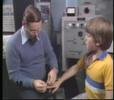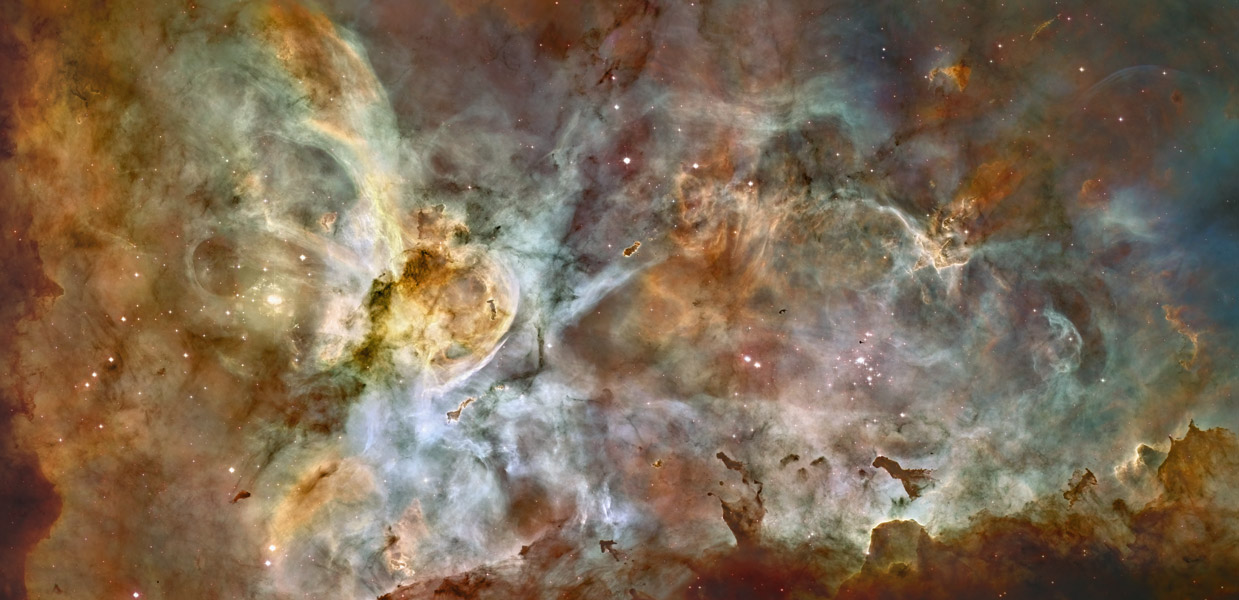Daily Link Splurge |
- Little Ben Affleck on PBS
- Dan Ariely on how symbolic wealth makes us act dishonestly
- Glacial Lakes in Glacier Bay National Park, Alaska, U.S.A.
- The Most Scientific Tattoo You'll See Today (PIC)
- 321 Contact Original Opening Theme
- Astronomy Picture of the Day
- Human pathogens threaten ancient cave art
- HIFiRE hypersonic test flight
- Genesis 2.0
- Carina Nebula Panorama from Hubble
| Posted: 24 May 2009 06:37 PM PDT  (11 votes - 1 comment - 220 views) Yes, it's Ben Affleck at the age of 12 helping out in a science program called "The Voyage of the Mimi". It's the clueless stare starting at 1:25 then his question then right back in to his clueless stare that really had me cracking up! |
| Dan Ariely on how symbolic wealth makes us act dishonestly Posted: 24 May 2009 04:58 PM PDT  (18 votes - 6 comments - 259 views) Dan Ariely describes his experiment of leaving 6 coke drinks vs. 6 dollars in a public place to test effect on ethical behavior. He extrapolates this result to a society that is dominated by symbolic representations of wealth: asset portfolios, credit, mortgage-backed bonds, etc. The Professor of behavioral economics also alluded to this experiment in his TED talk: http://philosophy.videosift.com/video/Why-we-think-it-s-OK-to-cheat-and-steal-sometimes This video is part of a series promoting his book: Predictably Irrational: Expanded and Revised Edition (2009) in which he takes classical rational-based economics to task. |
| Glacial Lakes in Glacier Bay National Park, Alaska, U.S.A. Posted: 24 May 2009 03:30 PM PDT Photographer: Casey Bates |
| The Most Scientific Tattoo You'll See Today (PIC) Posted: 24 May 2009 01:30 PM PDT Joe writes: "My tattoo is 3 lines of equations, the top is the Born Oppenheimer Approximation, the second line is the equation in the form of a 3-Dimensional Schroedinger Equation, and the solution in the form of a Schroedinger Equation." Indeed... |
| 321 Contact Original Opening Theme Posted: 24 May 2009 12:02 PM PDT  (18 votes - 3 comments - 185 views) This is the theme from 1983-1986. Ah, how the words so quickly come back to me! |
| Posted: 24 May 2009 11:50 AM PDT In one of the brightest parts of Milky Way lies a nebula where some of the oddest things occur. NGC 3372, known as the Great Nebula in Carina, is home to massive stars and changing nebula. Eta Carinae, the most energetic star in the nebula, was one of the brightest stars in the sky in the 1830s, but then faded dramatically... |
| Human pathogens threaten ancient cave art Posted: 24 May 2009 11:00 AM PDT The Lascaux cave in south-west France houses invaluable animal paintings that are between 16,000 and 17,000 years old, making them among the oldest examples of cave art ever found. Now conservationists must deal with the twin threats of the Fusarium solani fungus and the new bacterial populations. |
| Posted: 24 May 2009 10:40 AM PDT Scientists have conducted the first successful test flight in the HIFiRE program, investigating hypersonics technology and its application to advanced scramjet-powered space launch vehicles. |
| Posted: 24 May 2009 08:12 AM PDT  (17 votes - 5 comments - 313 views) Michael Shermer revises the Genesis creation story with some hard science. Please to enjoy. |
| Carina Nebula Panorama from Hubble Posted: 24 May 2009 06:06 AM PDT  |
| You are subscribed to email updates from Daily Link Splurge To stop receiving these emails, you may unsubscribe now. | Email delivery powered by Google |
| Inbox too full? | |
| If you prefer to unsubscribe via postal mail, write to: Daily Link Splurge, c/o Google, 20 W Kinzie, Chicago IL USA 60610 | |